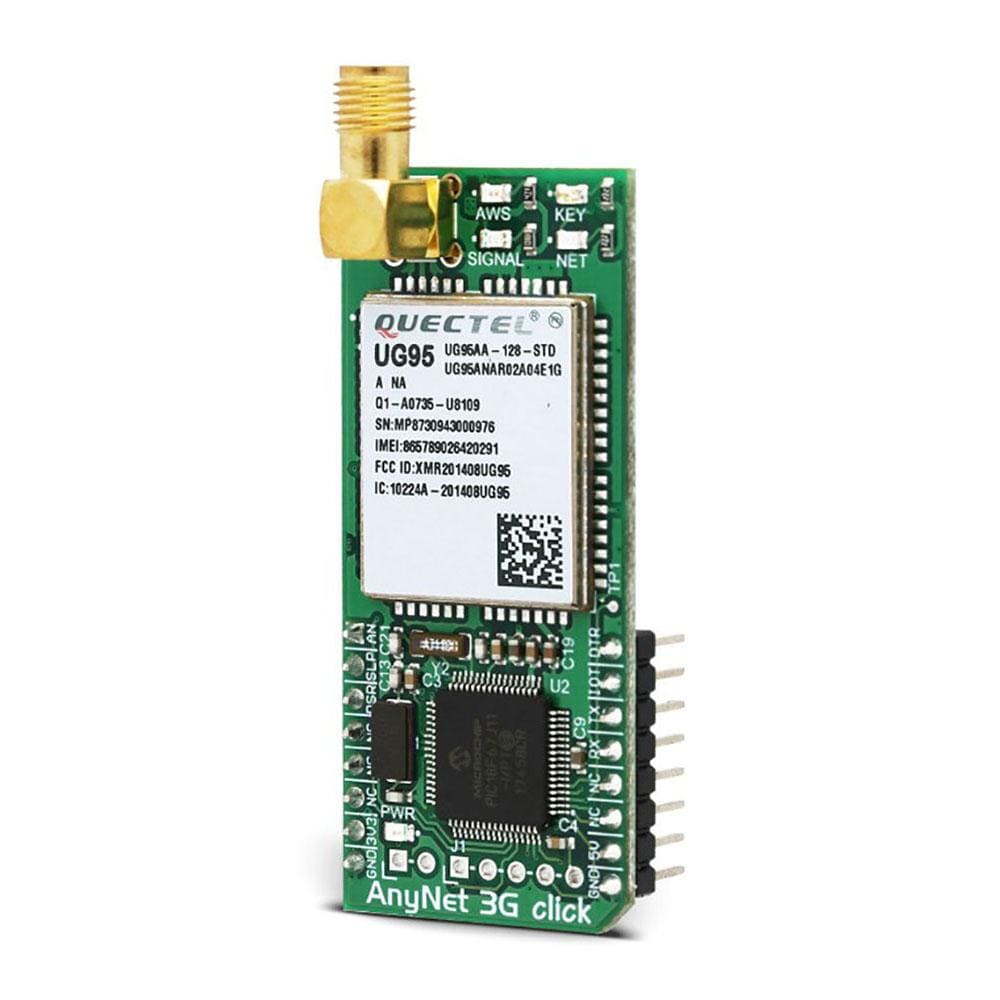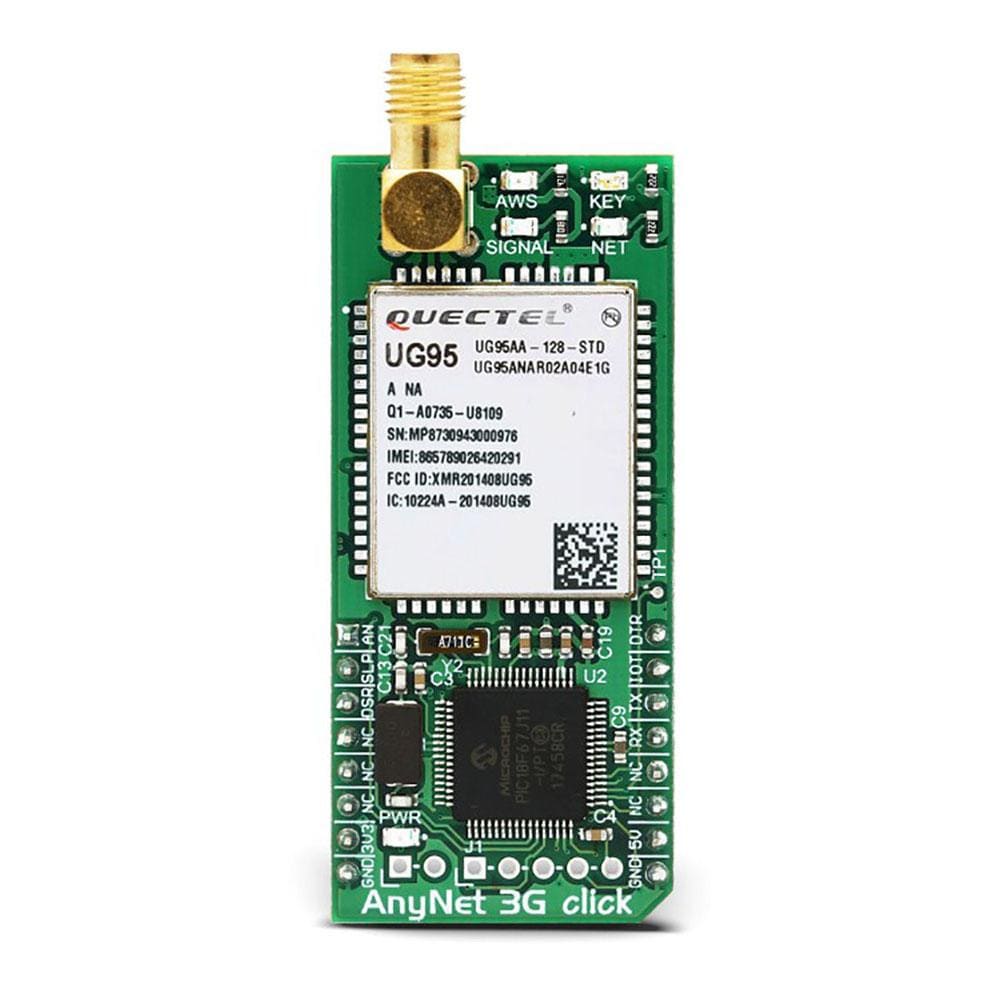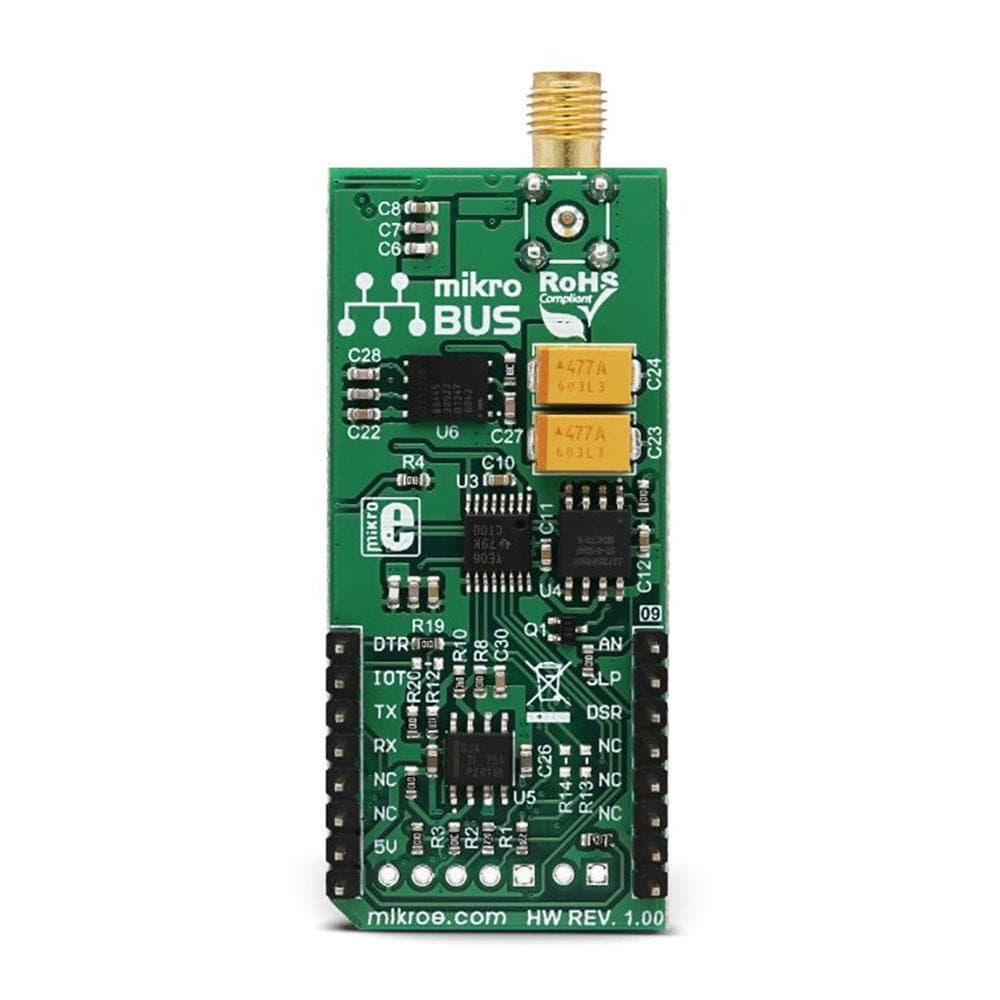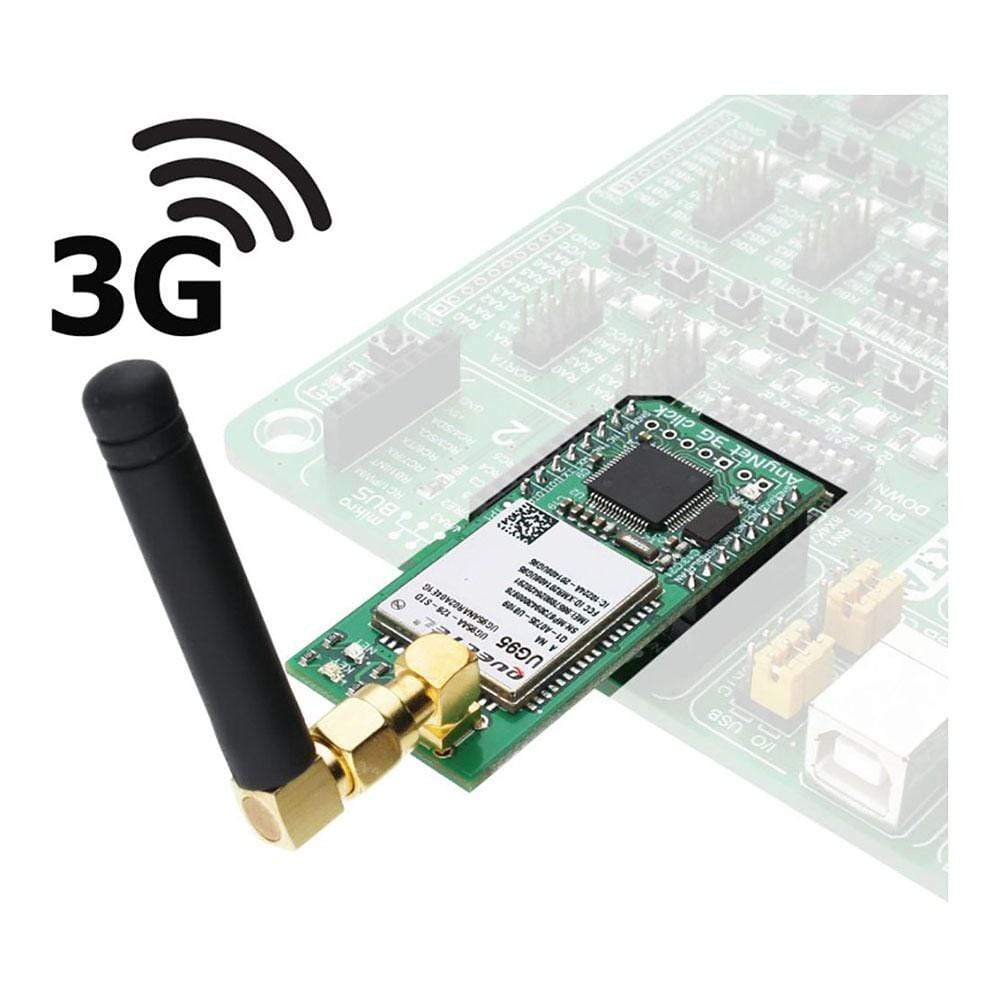



Overview
The AnyNet 3G-AA Click Board™ is a Cellular to AWS gateway device, which provides developers with the complete solution for various IoT applications, by using the AWS IoT and Cloud Storage Services for the data storage, analysing and processing. AnyNet click board™ provides a secure connection with the AWS over the air (OTA), by utilizing the Quectel UG95-AA 3G module, offering UMTS/HSPA coverage for the North American region, Eseye ES4623 embedded SIM card, that can work with all the major cellular operators within the NA region. The AnyNet 3G-AA Click Board™ can be used as an AWS IoT button with almost no configuration.
The AnyNet 3G-AA Click Board™ comes supplied with the start-up package - free activation through the AWS, unique ID number of the embedded SIM card and six-month cellular connectivity services of up to 5000 messages to the AWS cloud. With the AnyNet 3G click, users get a unique level of integration with the AWS IoT services.
Note: Before purchasing the AnyNet 3G-AA Click Board™, please contact Eseye and check for the coverage and support of embedded SIM cards from your local provider. Opening an AWS account and subscribing to the Eseye marketplace is mandatory to work with this click board.
The antenna is sold separately.
Downloads
Das AnyNet 3G-AA Click Board™ ist ein Gateway-Gerät für Mobilfunk zu AWS, das Entwicklern die Komplettlösung für verschiedene IoT-Anwendungen bietet, indem es die AWS IoT- und Cloud Storage Services zur Datenspeicherung, -analyse und -verarbeitung nutzt. AnyNet Click Board™ bietet eine sichere drahtlose Verbindung mit AWS (OTA) durch Verwendung des Quectel UG95-AA 3G-Moduls, das UMTS/HSPA-Abdeckung für die nordamerikanische Region bietet, sowie die eingebettete SIM-Karte Eseye ES4623, die mit allen großen Mobilfunkbetreibern in der nordamerikanischen Region funktioniert. Das AnyNet 3G-AA Click Board™ kann fast ohne Konfiguration als AWS IoT-Taste verwendet werden.
Das AnyNet 3G-AA Click Board™ wird mit einem Startpaket geliefert – kostenlose Aktivierung über AWS, eindeutige ID-Nummer der eingebetteten SIM-Karte und sechsmonatige Mobilfunkverbindungsdienste mit bis zu 5000 Nachrichten an die AWS-Cloud. Mit dem AnyNet 3G Click erhalten Benutzer ein einzigartiges Maß an Integration mit den AWS IoT-Diensten.
Hinweis: Bevor Sie das AnyNet 3G-AA Click Board™ kaufen, wenden Sie sich bitte an Eseye und prüfen Sie die Abdeckung und Unterstützung eingebetteter SIM-Karten durch Ihren lokalen Anbieter. Um mit diesem Click Board arbeiten zu können, müssen Sie ein AWS-Konto eröffnen und sich beim Eseye-Marktplatz anmelden.
Die Antenne ist separat erhältlich.
| General Information | |
|---|---|
Part Number (SKU) |
MIKROE-3145
|
Manufacturer |
|
| Physical and Mechanical | |
Weight |
0.022 kg
|
| Other | |
Country of Origin |
|
HS Code Customs Tariff code
|
|
EAN |
8606018713622
|
Warranty |
|
Frequently Asked Questions
Have a Question?
Be the first to ask a question about this.




